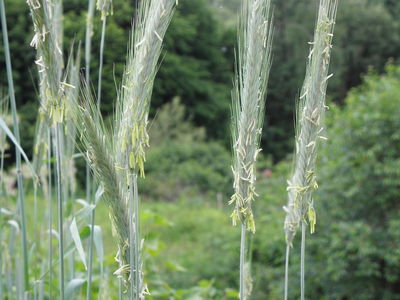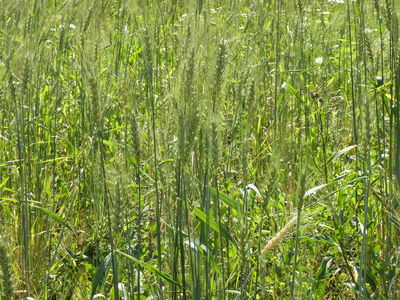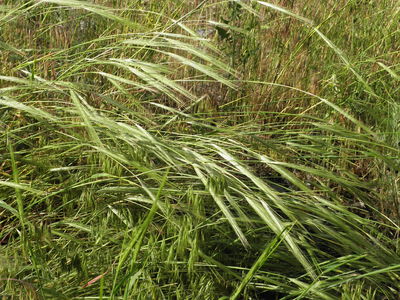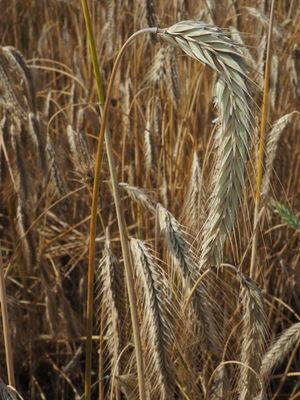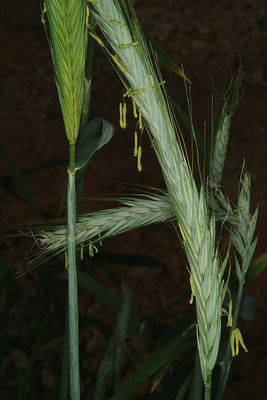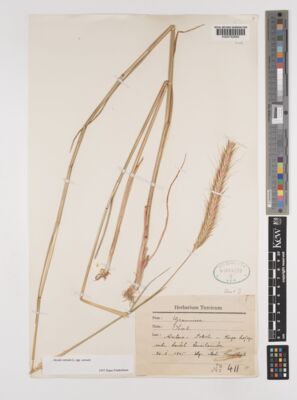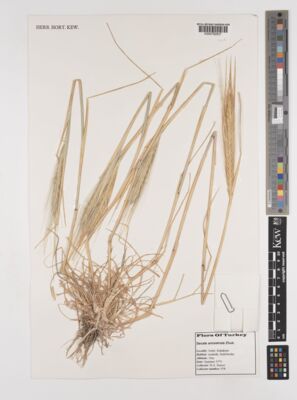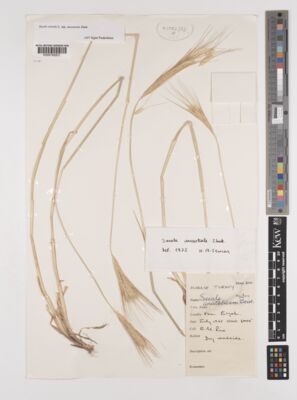Geography and distribution
Rye is cultivated in Europe, Africa, temperate Asia, tropical Asia (India and Malesia), Australasia, North America, Central and South America. Rye is especially common in temperate regions, although in the tropics and subtropics some farmers grow rye at high altitudes, for example, in the highlands of East Africa.
Ethiopian rye is successfully grown by some small-scale farmers on the highlands of Arsi although there has been limited success in growing rye in Zambia and Mozambique.
Description
Overview: Secale cereale is an annual with stems up to 150 cm long and clumped together at the base.
Leaves: Leaf blades are 10-20 cm long and 5-10 mm wide, sometimes hairless and sometimes covered in short, thin hairs.
Flowers: The inflorescence is composed of racemes (unbranched axes along which the spikelets are arranged) 5-15 mm long. Spikelets (clustered units of flowers and bracts, typical of grasses) are 12-15mm long and comprise two fertile florets. In Secale cereale the spikelets are solitary, fertile and attached directly to the inflorescence axis. The upper and lower glumes (empty bracts that enclose the florets) are similar in shape and size, both about 12 mm long and papery in texture.
The apical, sterile florets resemble the fertile florets although they are underdeveloped. The flower contains two lodicules (small structures at the base of the stamens). Each flower has three anthers, is 7 mm long and the ovary is a fleshy appendage below the style.
Fruits: The fruit is a caryopsis (a dry fruit where the fruit wall is attached to the seed) 8-10 mm long.
Uses
Most rye production goes into traditional European rye breads with the remainder going into animal feed and alcohol production.
Pumpernickel bread is a dark, heavy, slightly sweet bread made from coarsely ground rye. Other rye breads are made of varying percentages of rye and wheat flour - the higher the proportion of rye, the darker the loaf. The brand Ryvita is a popular crisp flatbread made from rye that is commonly found in supermarkets in the UK. Rye flour mixed in with maize flour makes a delicious porridge eaten in some parts of Africa and, when finely milled, it can be used to make cake.
Rye grain can be sprouted to make malt for beer. Malt made from rye can be used in a number of alcoholic beverages such as rye whisky in North America and vodka in Poland and Russia.
Another important use of rye is as fodder, particularly in pig husbandry.
Rye straw has a variety of applications, including as feed for cattle, thatching, mulching material, papermaking, packing material and fuel. The starch from the rye grain is used industrially in the production of glue, matches and plastics.
In India and Europe rye is sometimes grown as a host plant for ergot (Claviceps purpurea), which is used medicinally as a treatment against migraine. Rye pollen extracts are also used as a medicine against benign prostatic hyperplasia and are commercially available in Western Europe, Japan, Korea and Argentina.
Currently rye is being investigated as a potential biomass energy crop.
Crop wild relatives of rye
Wild relatives of rye are an important source of genetic diversity for the improvement of rye and other closely-related cereals such as wheat. The crop wild relative Secale montanum , for example, is tolerant of low temperatures and high levels of soil aluminium and manganese and thus has potential as a gene source to improve other cereals. Current breeding efforts in rye agriculture are seeking to achieve yield improvement, increased protein content, cold tolerance and resistance to rust and ergot.
The Millennium Seed Bank and the Global Crop Diversity Trust are engaged in a ten-year project, called 'Adapting Agriculture to Climate Change'. The project aims to protect, collect and prepare the wild relatives of 29 key food crops, including rye, so that they are available to pre-breeders for the development of new varieties that are more resilient to the effects of climate change.
Millennium Seed Bank: Seed storage
The Millennium Seed Bank Partnership aims to save plants worldwide, focusing on those plants which are under threat and those which are of most use in the future. Once seeds have been collected they are dried, packaged and stored at -20°C in Kew's Millennium Seed Bank vault.
Description of seeds: Average weight of 1,000 seeds = 20.9 g
Number of seed collections stored in the Millennium Seed Bank: One
Seed storage behaviour: Orthodox (the seeds of this plant can be dried to a low moisture content without significantly reducing their viability which means they are suitable for long-term frozen storage)
Germination testing: Successful
This species at Kew
The Economic Botany Collection houses a number of artefacts made with rye, among them this brush which has bristles woven out of rye grass. It is used in Germany and other parts of Europe to wash and brush out ovens.



